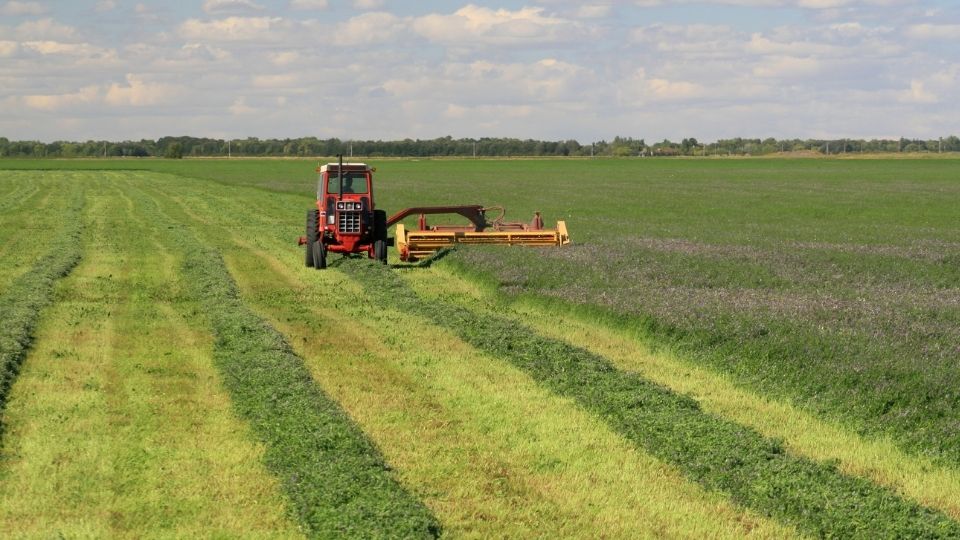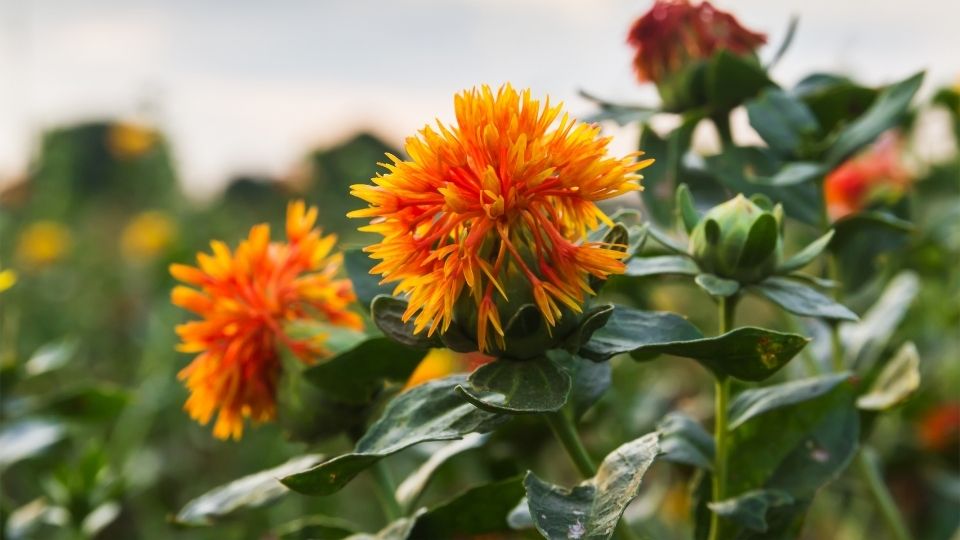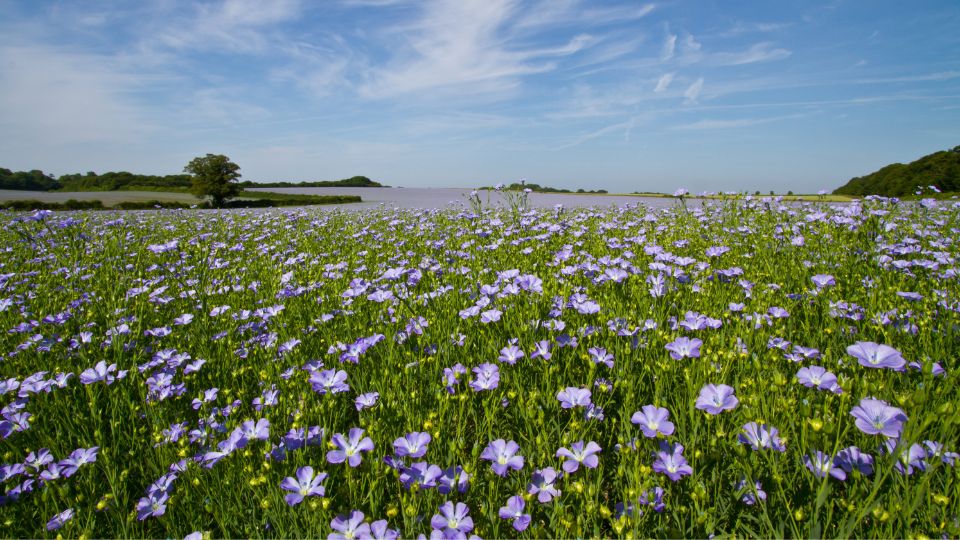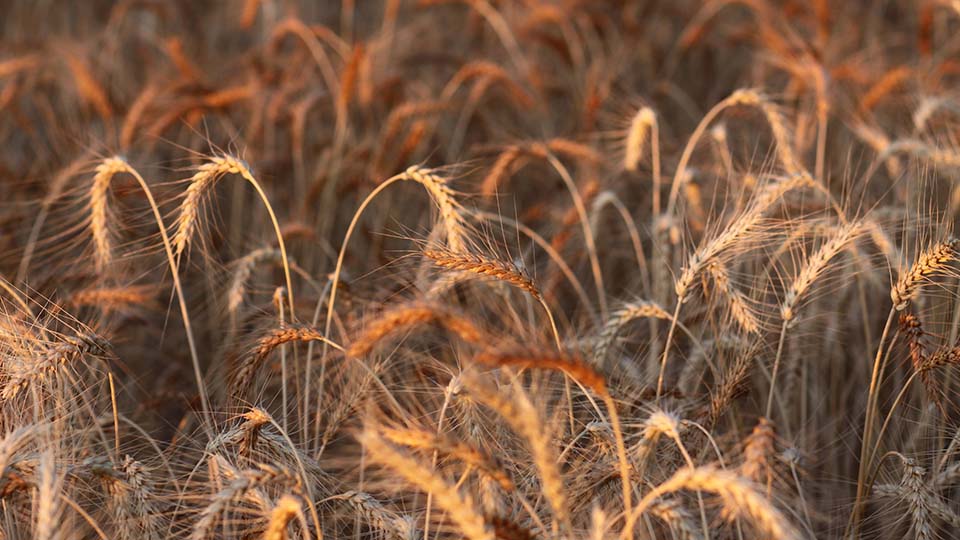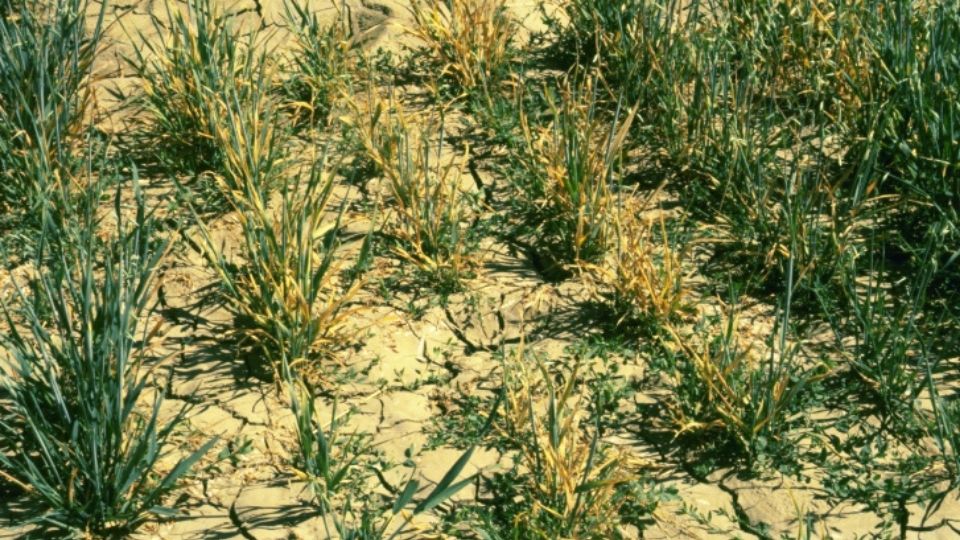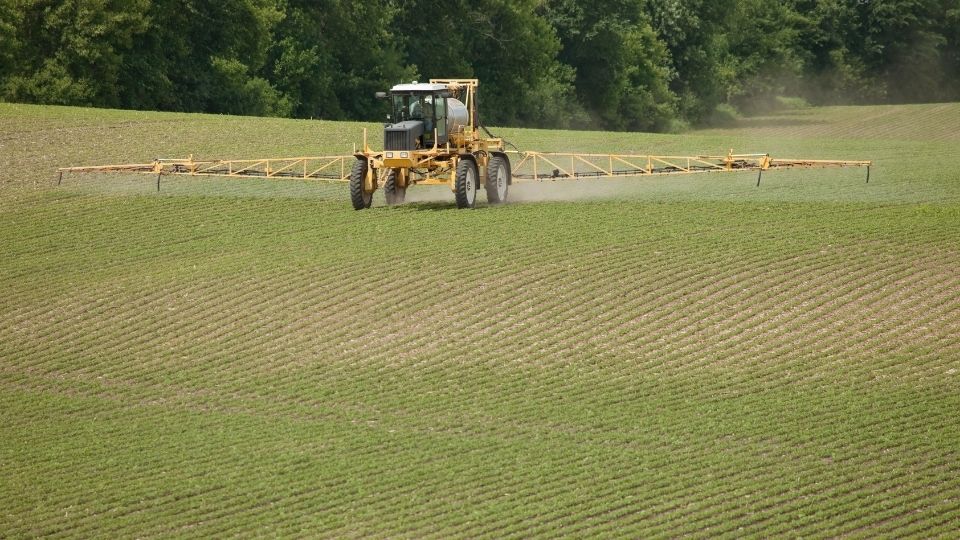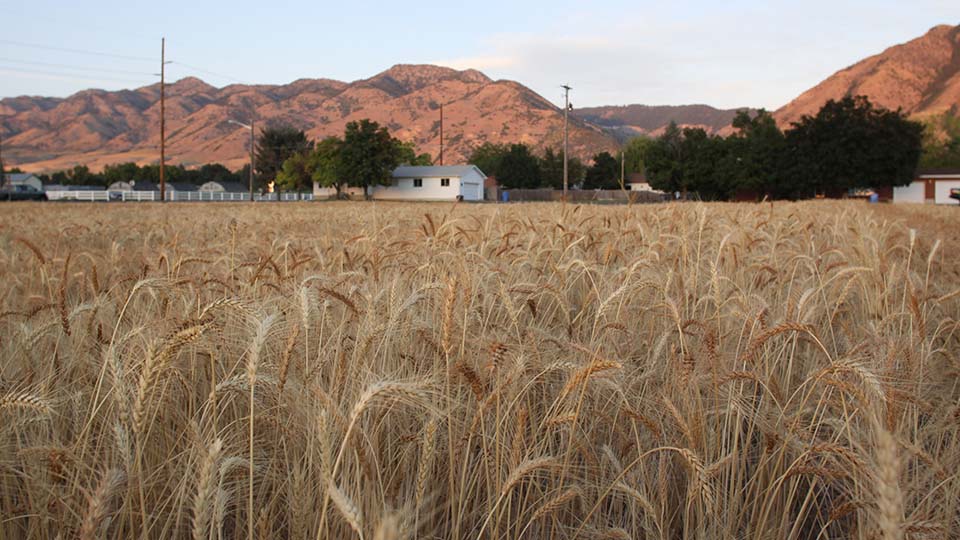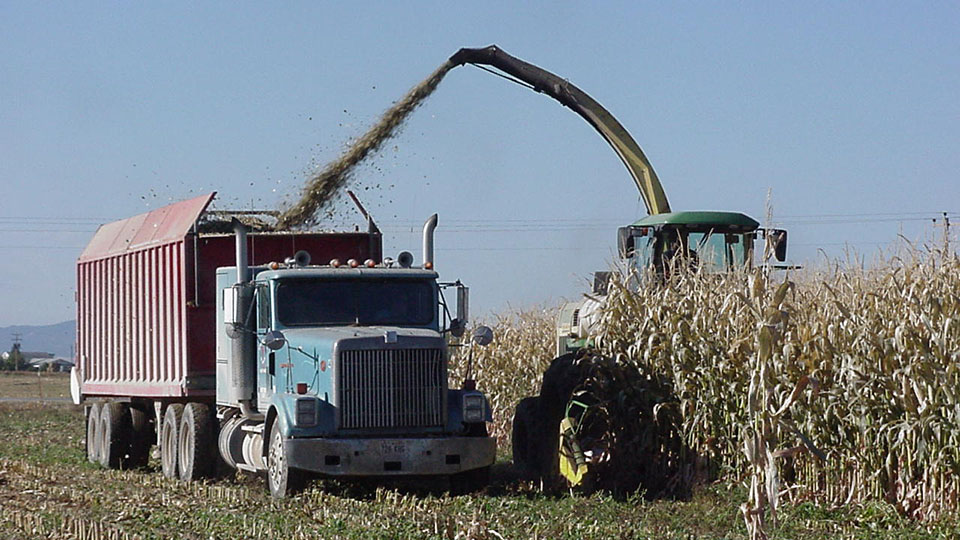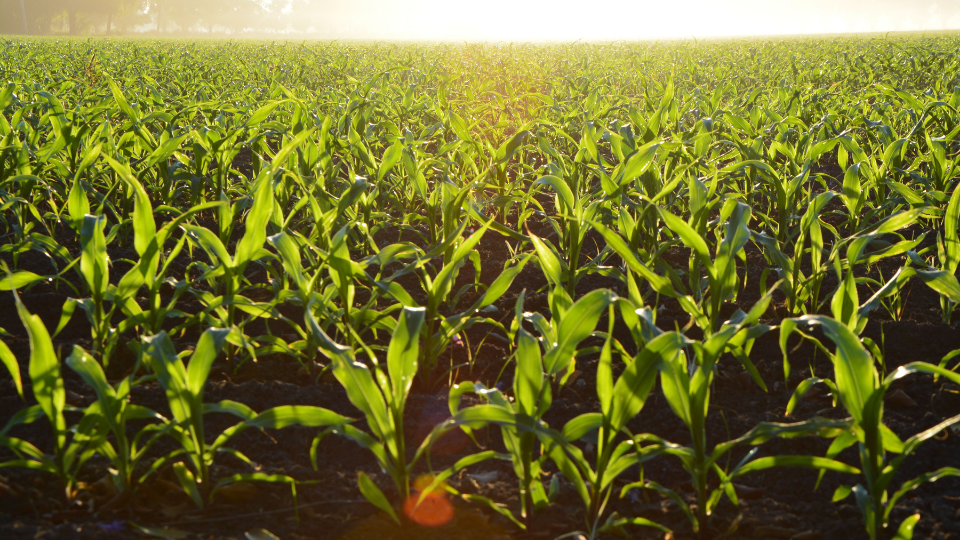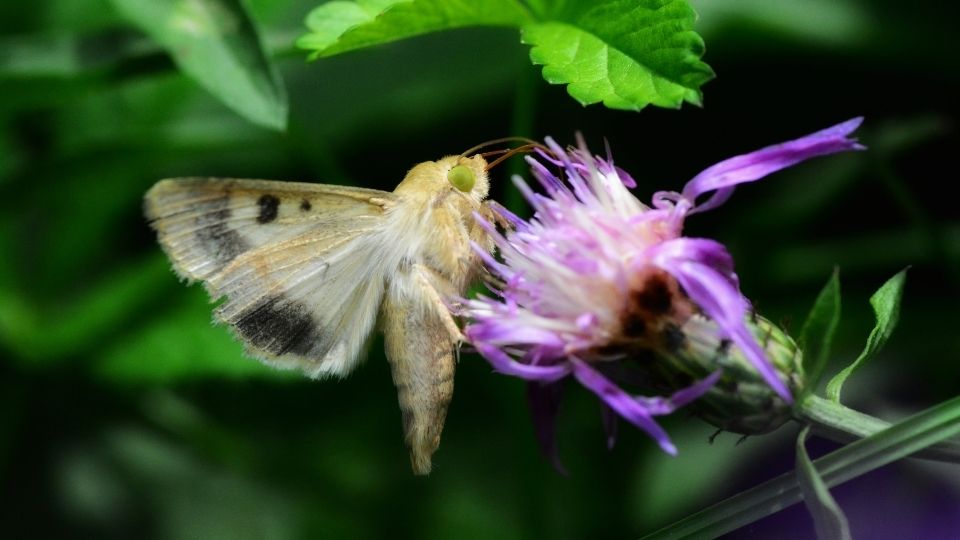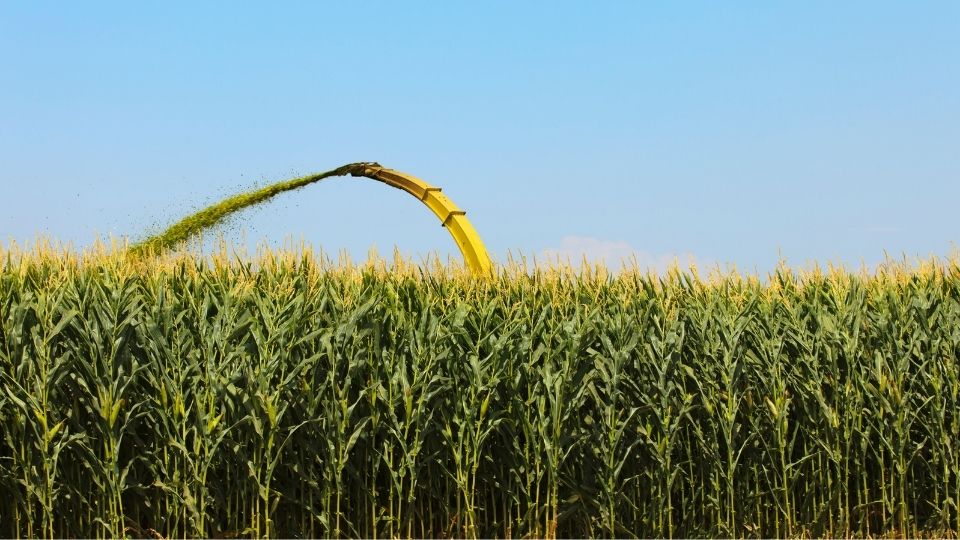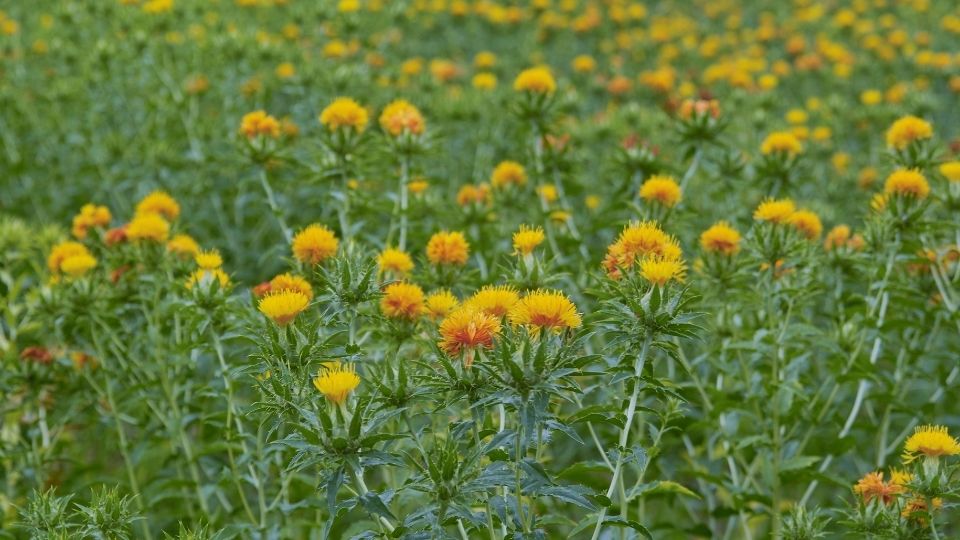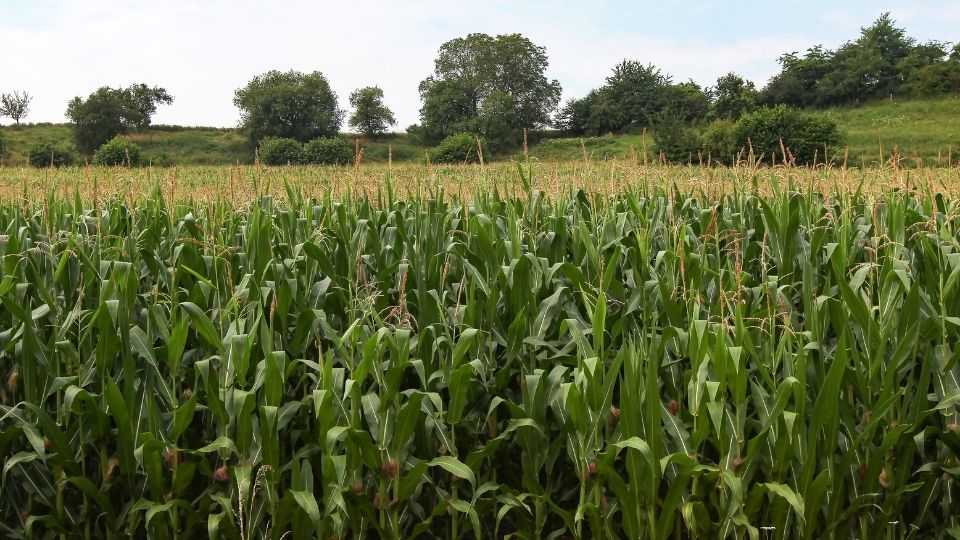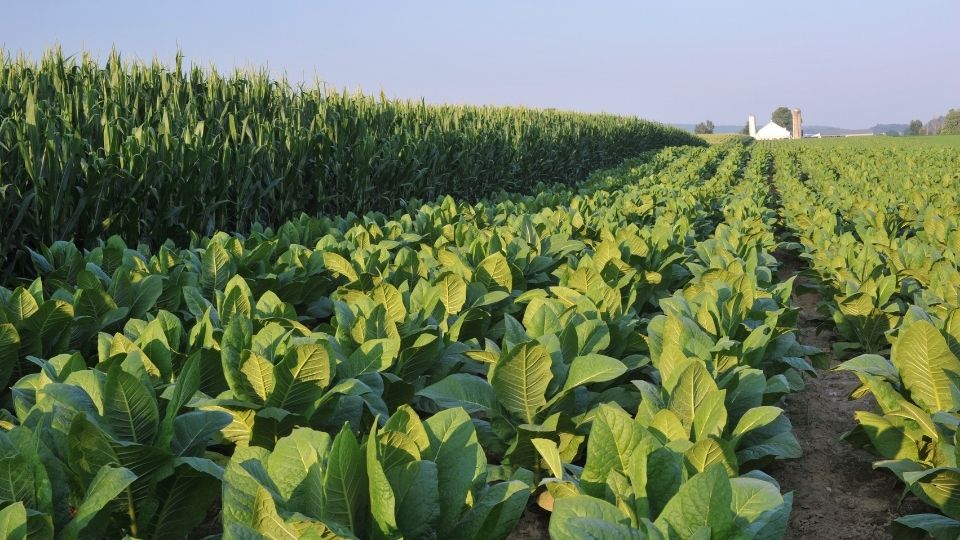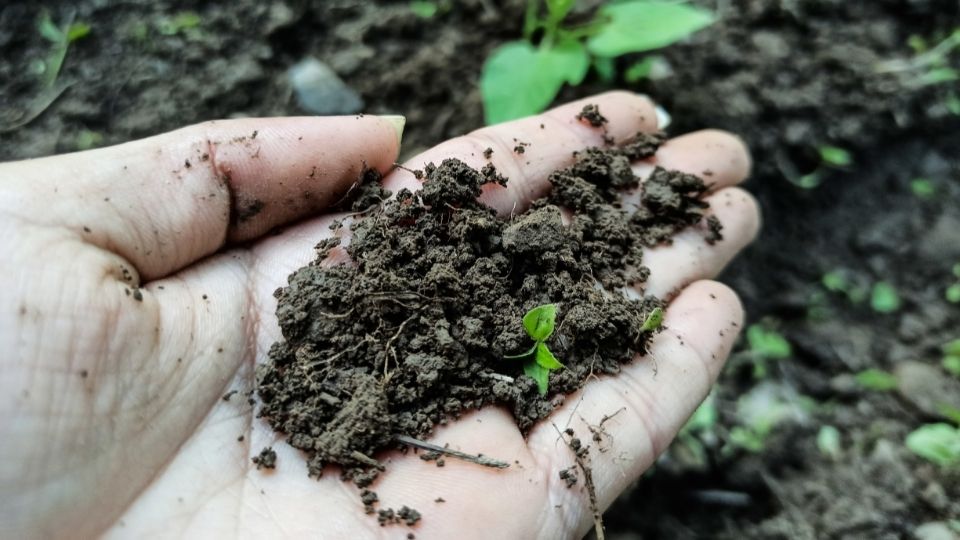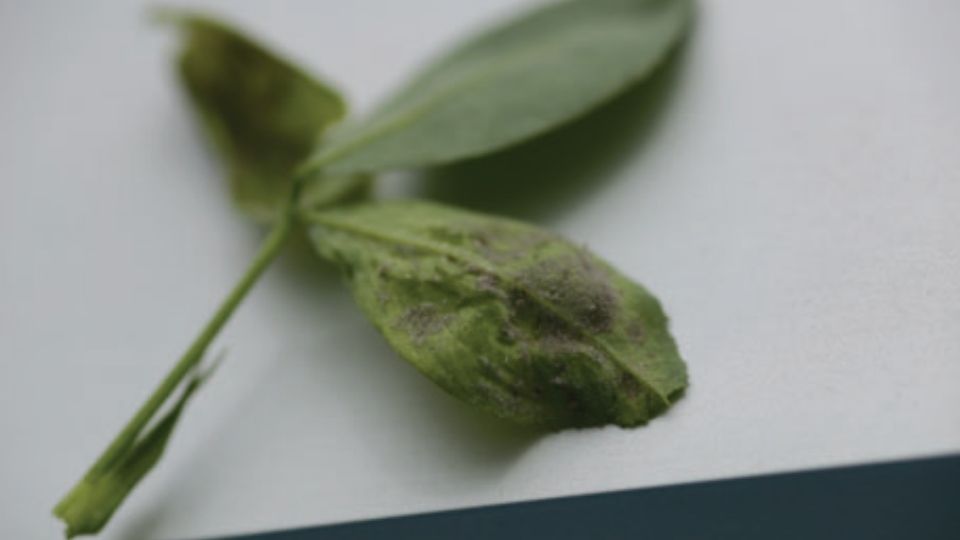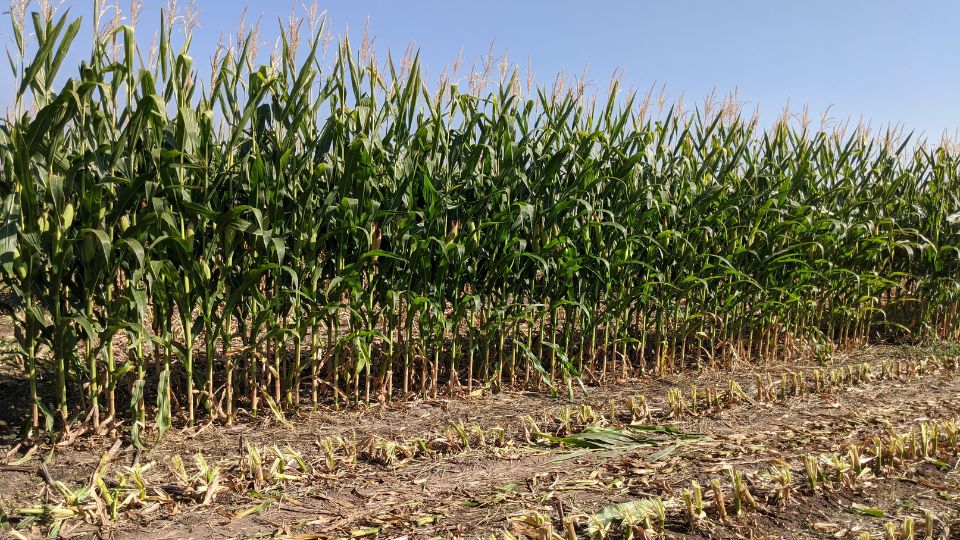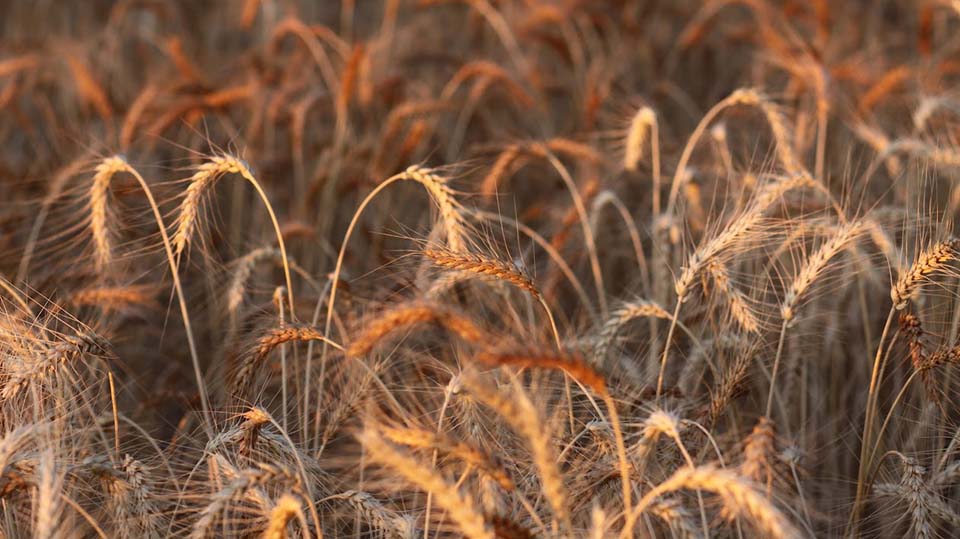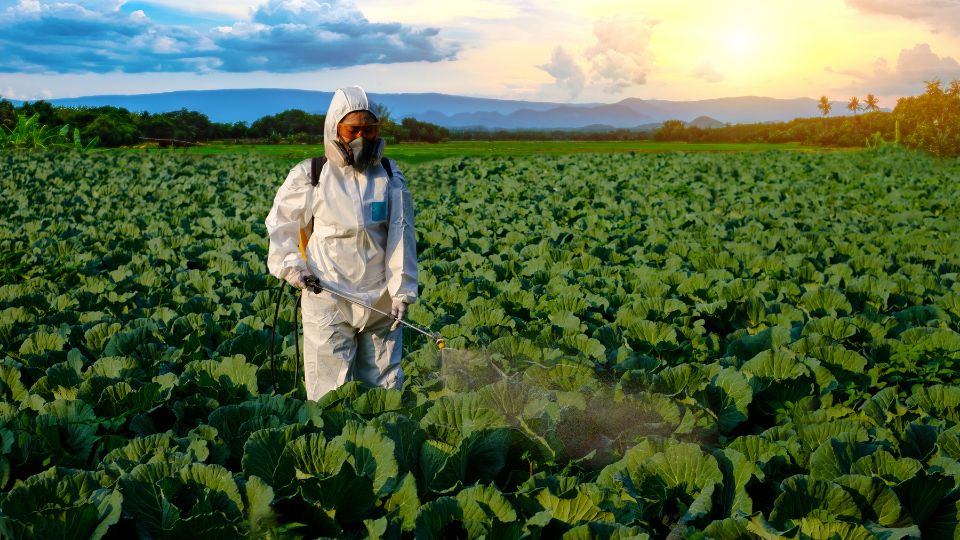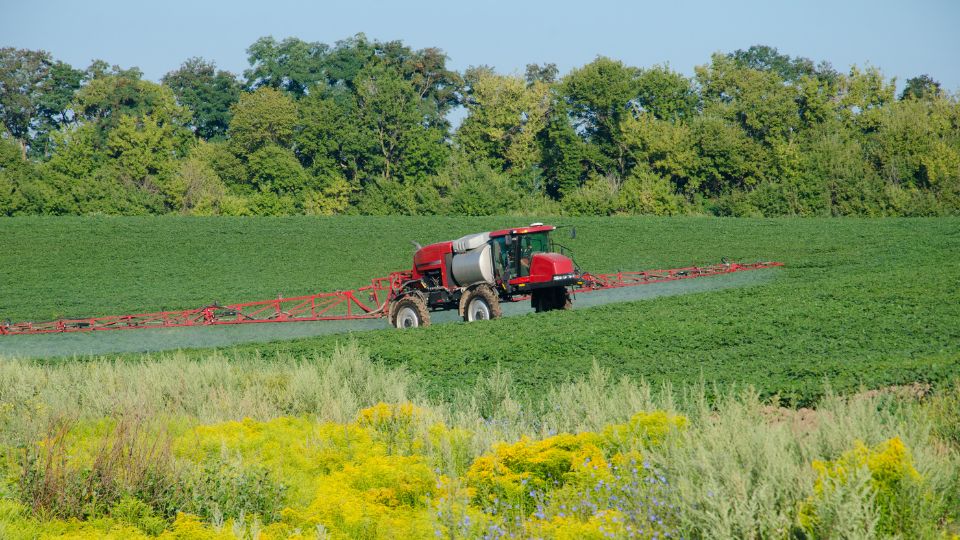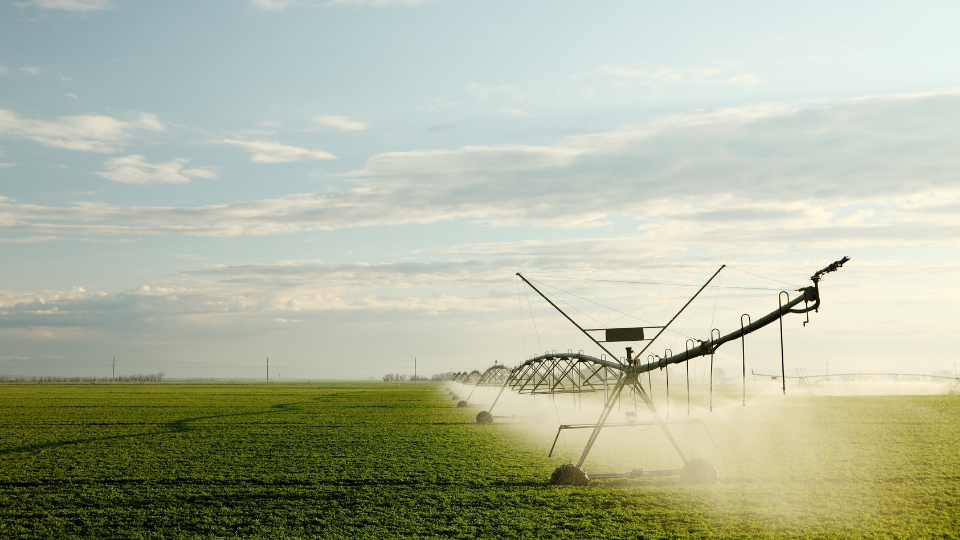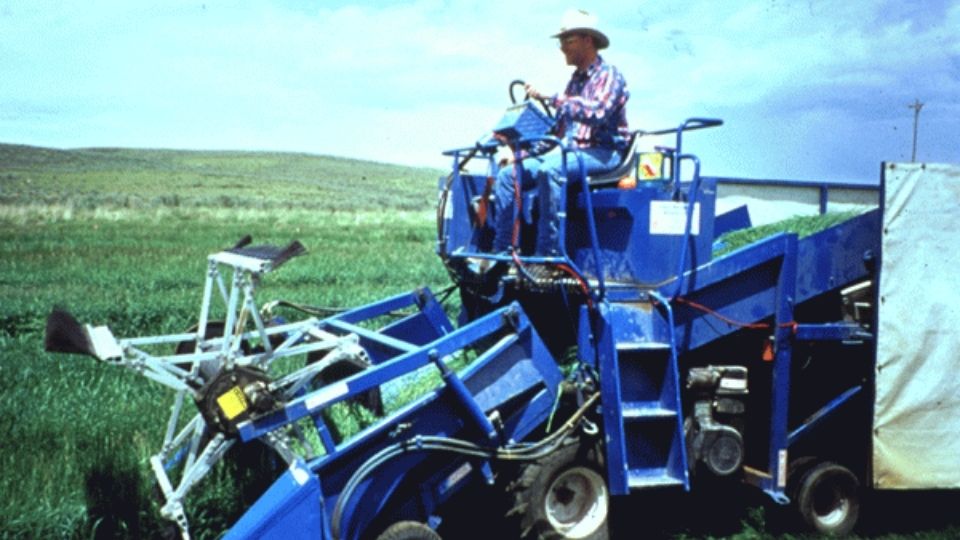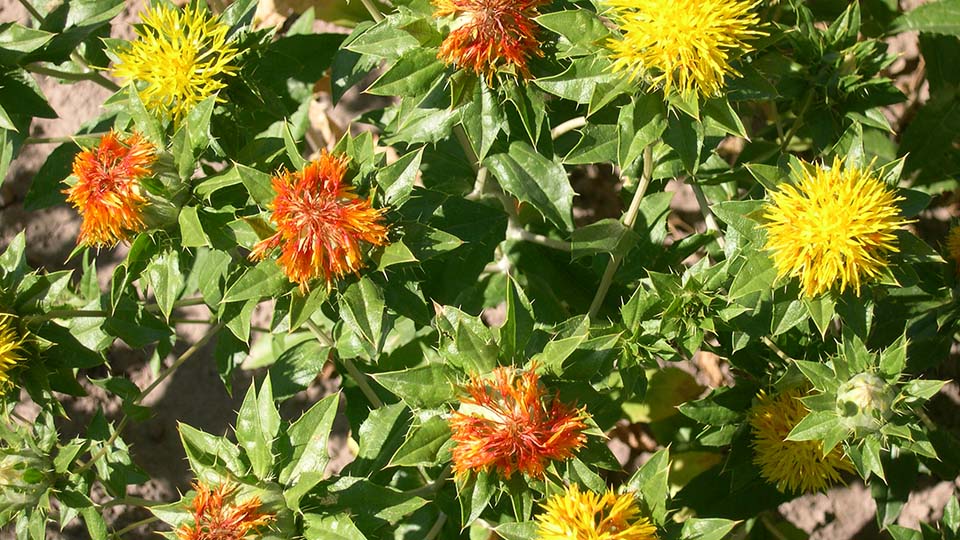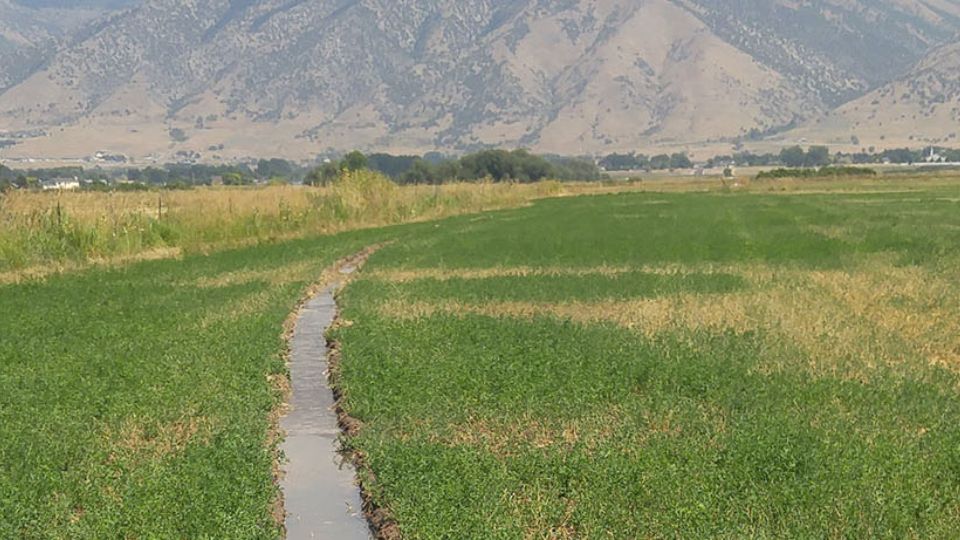Cover Crops for Utah

Interest in cover crops among Utah growers has been on the rise in recent years due to a desire to improve soil health and an increase in available funding for such practices through government programs. Relatively few Utah growers have tried cover crops to date, but acreage is increasing each year and will likely continue to grow in the future. Unfortunately, most of the information on cover crops circulating online and in magazines comes from research and testimonials from other regions of the U.S. with longer growing seasons, more precipitation, and different crop rotations than Utah. The purpose of this fact sheet is to provide the current state of knowledge on cover crop management for Utah based on USU research and local grower experience.
What Is a Cover Crop?
A cover crop is a secondary crop used to provide a wide range of benefits within a cropping system. Frequently, a cover crop is planted to replace a bare fallow ground between cash crops or to provide a source of additional nitrogen (N) and organic matter. Cover crops can also be used to reduce soil erosion, recover residual N from the previous crop, or as an alternative forage. Cover crops add diversity to a cropping system, which can improve soil health and beneficial insect populations. The use of a cover crop is most effective when it is targeted to meet specific goals within the available growing days. Before planting a cover crop, careful attention should be given to advantages/ disadvantages, species selection, and management strategies.
Advantages of Cover Crops
Cover crops may be used for a variety of reasons. Common uses in Utah include reducing soil erosion and increasing soil quality measures such as organic matter, total carbon stores, and beneficial soil microbes. Using a mixture of species with a variety of rooting patterns reduces compaction and increases water and air infiltration. Cover crops can also suppress weed growth and seed production through competition for light, water, and nutrients. Some common cover crops, like rye, produce chemicals that discourage weed seedling emergence, known as allelopathy. Other crops like raddish can deter soil nematodes.
Many people turn to cover crops to help meet nutrient requirements for future cash crops. Cover crops such as legumes, break down quickly upon termination and release N for the next crop. A fall planted cover crop can accumulate residual soil N, preventing loss from the system through leaching or runoff in the winter months. When terminated in the spring, the cover crop breaks down in the soil and releases N to be used by the crop during the summer. Legume cover crops can be particularly helpful in accessing soil stores of P, unavailable to most crops. The association of arbuscular mycorrhizal fungi with legumes allows for greater root surface area and conditions that are favorable for the mobilization of P closer to the soil surface. In many western states, cover crops are often used an alternate grazing source for livestock as well. When a cover crop is grazed in place, most of the nutrients are returned to the soil through the manure.
Challenges of Cover Crops?
Despite the benefits of cover crops, there are still some challenges. Perhaps the most formidable obstacle is the cost. The improvements that cover crops can make in terms of weed control, nutrient return, and soil health are difficult to measure with a dollar value; whereas, the cost to purchase seed and to plant and manage the cover crop is an immediate cost. Planting a small percentage of total farm acres to a cover crop, initially, is a strategy to allow a grower to assess the cost vs. benefit of cover crops on their operation with very little financial risk. If results are positive, acreage can be expanded to encompass more of the farm in future years.
The shortness of the growing season in Utah, compared to other states, can limit cover crop options. Some cover crop species will winter-kill in Utah’s harsh winters, so plant in late summer to early fall to allow sufficient growth before a killing frost. Fields planted to small grains, rather than corn, are often good candidates for a cover crop due to an early harvest making the field available by July or August. In the spring, cover crops used as a green manure source must be allowed time to grow before planting a following crop or returns of N to the soil will be low. At the same time, delays in cover crop termination can push back planting time for cash crops, causing yield loss.
Another factor of concern is the use of soil water by cover crops. In dryland systems, a fallow year between crop years is often employed in Utah because a single year of moisture is usually not sufficient to grow a crop of wheat. Growing a cover crop during the fallow year can deplete soil moisture to the point that wheat yield loss is likely. In irrigated fields, water applied for cover crops has a cost, both in terms of the labor and expense of operating irrigation equipment, and the opportunity cost of water use by a cover rather than a cash crop.
Finally, given time and proper management, cover crops can produce a great deal of foliage. High levels of biomass can interfere with field operations such as tillage and planting. Furthermore, cover crop growth during a time of year that is typically fallow can create a “green bridge” for insect and disease pests that can exacerbate pest problems in the cash crop.
Selecting a Crop/Mixture
Two major categories of cover crops are referred to as warm season or cool season. Warm season crops are generally suited to be planted in late spring/early summer and terminated before frost. Cool season crops can sometimes overwinter and can be planted in late fall or early spring for a spring termination. Common cover crops for Utah can be found in the attached Appendix or in the Western SARE publication Managing Cover Crop for Profitability (http://www.sare.org/Learning-Center/Books/Managing-Cover-Crops-Profitably-3rd-Edition/Text-Version). Information on identification, seeding rate and depth as well as some benefits and considerations is included. Pay careful attention to known crop interactions that may negatively impact subsequent crops.
Identify the desired result of incorporating a cover crop into your system. This step alone will likely dictate which family of plants you should consider. Grasses tend to immobilize excess N, add organic matter, stop erosion and suppress weeds. Legumes generally provide faster N release, weed control and beneficial insects. Brassicas fall somewhere in between: moderate rate of N release, good weed suppression, and moderate amounts of organic C returns. Brassicas also can break-up difficult soil compaction and reduce some soil borne disease and nematode pressure. Frequently, growers use a mix of these plant families to provide a quick release of N after incorporation as well as the benefits of biomass return and disease control.
The ratio of carbon (C) to nitrogen (N) in the cover crop is critical in choosing a suitable cover crop. A cover crop with a low C:N ratio, like hairy vetch, will release N back to the soil rapidly following termination. Alternately, rye has a high C:N ratio and will release N much slower. Crops containing high amounts of carbon serve as a great tool to increase soil organic matter and immobilize soil N, but will not provide much plant available nitrogen following termination and should not be counted as a N input for the following crop. Depending on timing of cover crop termination, the ratio of C:N, and therefore available N, can change.
Dates of Cover Crop Establishment and Termination
The more time a cover crop can spend growing in the field, the greater the benefit. In a irrigated field trial in Logan, Utah, a mix of 70% hairy vetch and 30% winter wheat provided a thick winter cover preceding a grain crop. However, the planting and termination dates varied greatly between the two year study and, therefore, the total N contributions were also different. Table 1 shows the impact of planting and termination date on N available for a following crop. In 2013, the cover crop was seeded early in the fall (late August) and not terminated until mid-May. In 2014, the cover crop was seeded mid-October, producing little top-growth before winter, then terminated in mid-April. The amount of dry matter (DM) in the vetch was 9 times greater and the wheat had 10 times more DM in the first season as compared to the second. The amount of N supplied by the cover crop in 2014 would likely be inadequate for any following cash crop.
On dryland fields in Utah, cover crop establishment can be tricky due to the lack of soil moisture to germinate shallow-planted seeds in early- to mid-fall. Establishment is greatly increased with even a single irrigation event. If rains do occur, the cover crops often germinate so late that seedling survival over the winter is jeopardized. One dryland cover
crop strategy that has been successfully employed in USU research is dormant seeding the cover crops as late in the year as possible, right before the soil freezes. The idea is that the seed will lay in frozen soil under the snow and then will germinate in the spring as soon as the soil temperature begins to warm. Since the only reliable precipitation most of these drylands receive on a year to year basis occurs in the winter, this allows the seed to be in place and ready to germinate as soon as soil temperature and moisture conditions are favorable
Establishment
Establishing covers crops requires good seed to soil contact which means using a small grain drill is best for most crops. Soil preparation should account for residue management to allow for adequate seed to soil contact. Some crops, such as rye, can be successfully broadcast, but seeding rates generally must be much higher (50% or more) to account for poor germination and decrease the chance for emergence of an uneven stand. Seeding rates and season recommendations are included in the Appendix. For a warm season cover to establish, for example following a winter wheat, consideration must also be given to the availability of water for germination and emergence. Conversely, establishing a cool season cover (fall seeded) should allow for adequate growth before frost and tolerance to winter temperatures.
Table 1. Results of cover crop trial in Logan Utah 2013-2014. The cover crop consisted of a 70% hairy vetch and 30% winter wheat mix seeded at 70/30 lbs/ac. Termination was accomplished with tillage. DM=dry matter; PAN=plant available N within 10 weeks after cover crop termination.
| Cover crop | Planting date | Termination date | Biomass(lbs DM/acre) | Total N(% DM) | Total N(lbs /acre) | Estimated PAN/acre |
|---|---|---|---|---|---|---|
| Vetch | Aug 29, 2012 | May 17, 2013 | 937 | 3.3 | 31 | 15.5 |
| Oct 15, 2013 | April 15, 2014 | 104 | 3.4 | 3.5 | 1.7 | |
| Wheat | Aug 29, 2012 | May 17, 2013 | 1114 | 2.6 | 29 | 8.9 |
Termination
The timing of termination will greatly affect the C:N ratio of a given cover crop and, therefore, the amount of plant available N. In general, to maximize the plant available N return to the soil, legumes should be terminated at the bud stage while
2013, the vetch was in bloom (3.3% N DM) while the wheat had initiated heading (2.6% N DM).The next year, the vetch total N was similar (3.4% N DM) while the wheat was much higher than the previous year as it was still in the stem elongation stage (3.0% N DM).
There is no single method of terminating a cover crop that works in all systems. Instead, the most effective method of terminating a cover crop depends on the species, the following crop, and the equipment available. Adequate time should be allowed between termination of a cover crop and subsequent seeding. Usually, anywhere from 10-14 days is recommended to allow for the cover crop to begin decomposition and ensure an adequate break in pest cycles.
In conventional systems, desiccation by herbicide can be used to effectively terminate a crop before incorporation with tillage or disking. Some species of cover crops can be very difficult to kill chemically, particularly at advanced stages of growth. Mechanical termination is frequently used in organic systems. Tillage or disking can be effective in tough to kill crops like vetch while adequately breaking up residue from crops like sorghum-sudan grass prior to seeding. Mowing is an option if surface residue is not a barrier for subsequent planting. Residue on the surface can be beneficial to prevent weed growth but can also impact establishment of subsequent crops. For no-till operations, a roller crimper has been used effectively with crops that have a more brittle stem. Vining crops like vetch are generally not killed with a roller. New roller machinery is increasing termination rates; however, a roller is an additional piece of equipment that can be pricey.
N Contributions from Cover Crop
The contribution of plant available nitrogen (PAN) to subsequent crops is critical in selecting a cover crop in many systems. Most PAN is released between 4 and 10 weeks after cover crop termination. In general, legume cover crops can provide up to 100 lbs PAN/acre while a cereal crop could potentially have the opposite effect and immobilize up to 50 lbs PAN/acre because it contains a high ratio of carbon to nitrogen as it matures. As discussed earlier, the timing of cover crop termination will impact the composition of plant matter and the amount of total N in tissue. This is the single greatest indicator of the potential release of PAN.
One way to estimate the amount of plant available nitrogen is using cover crop sampling. Samples of the cover crop can be harvested and sent to an analytical lab to give the percentage of total N in the dried cover crop, or dry matter (DM). If the plant tissue contains less than 1.5 percent N (DM), then it will likely provide no observable N contribution. Available N increases linearly from zero PAN release at 1.5 % N to about 35 lb N/ton of cover crop dry matter released at total N of 3.5%. Table 2 describes PAN results from cover crop trials in the Pacific Northwest (Sullivan and Andrews 2012).
Table 2. Predicted PAN within 10 weeks from cover crop termination.1 DM=dry matter; % N is from laboratory testing; PAN=plant available N within 10 weeks after cover crop termination
| % N in DM | Total N(lbs N/ton DM) | Calculator prediction(lbs PAN/ton DM) |
|---|---|---|
| 1.0 | 20 | 0 |
| 1.5 | 30 | 4 |
| 2.0 | 40 | 9 |
| 2.5 | 50 | 16 |
| 3.0 | 60 | 24 |
| 3.5 | 70 | 33 |
1Data Source: Sullivan and Andrews, ‘Estimating Plant Available Nitrogen Release from Cover Crops’. Pacific Northwest Extension Publication 636, November 2012. http://ir.library.oregonstate.edu/xmlui/bitstream/handle/1957/34720/pnw636.pdf
To use the calculator to estimate PAN in the first 10 weeks following cover crop termination, enter the table with the %N from lab testing and use the following equation:

For example, your local lab reports the cover crop residue contains 3% N. Using the table below, the calculator prediction for 3% N is 24 lbs PAN/ton DM. Your sampling indicates a total cover crop yield of 2.5 tons DM/acre.

References and Resources
- Bjorkman, T. ed., 2009. Cover crops for Vegetable Growers, Cornell University. http://covercrops.cals.cornell.edu/oats.php; http://covercrops.cals.cornell.edu/sudangrass.php
- Buckland, K.R., 2016. Increasing the Sustainability of Utah Farms by Incorporating Quinoa as a Novel Crop and Protecting Soil Health.
- Clark, A. ed., 2008. Managing cover crops profitably. DIANE Publishing. http://www.sare.org/Learning-Center/Books/Managing-Cover-Crops-Profitably-3rd-Edition/Text-Version
- Cover Crop Database, University of California Davis. http://asi.ucdavis.edu/programs/sarep/research-initiatives/are/nutrient-mgmt/cover-crops-database1
- Francis, C.A. ed., 2009. Organic farming: The ecological system (No. 54). ASA-CSSA-SSSA.
- Sullivan and Andrews, ‘Estimating Plant Available Nitrogen Release from Cover Crops’. Pacific Northwest Extension Publication 636, November 2012. http://ir.library.oregonstate.edu/xmlui/bitstream/handle/1957/34720/pnw636.pdf
Appendix – Cover Crop Species for Utah
Quick Reference Guide
See full descriptions for additional information such as pest management and rotational considerations.
| Crop | Season | N-fixation? | Drought tolerant? | Salinity tolerant? | |
|---|---|---|---|---|---|
| Warm | Cool | ||||
| LEGUMES | |||||
| Cowpea | X | YES | M | M | |
| Red clover | X | YES | M | L | |
| Austrian winter pea | X | YES | M | L | |
| Fava bean | X | YES | L | M | |
| Common vetch | X | YES | M | L | |
| Hairy vetch | X | YES | M | M | |
| Chickpea | X | YES | M-H | L | |
| Lentils | X | YES | L | L | |
| BRASSICAS | |||||
| Rape(canola) | X | NO | M | H | |
| Turnips | X | NO | L | L | |
| Radish (daikon) | X | NO | L | L | |
| OTHER BROADLEAF | |||||
| Buckwheat | X | NO | L | L | |
| GRASSES | |||||
| Sorghum-sudan | X | NO | H* | M | |
| Rye | X | NO | M | H | |
| Oats | X | NO | M | L | |
| Winter wheat | X | NO | M | M | |
| Barley | X | NO | M | M | |
H=high, M=medium, L=low tolerance
- Drought and freeze can cause high levels of prussic acid which is a concern for grazing
Legumes
Cowpea
| Key identifying features | Broadleaf, upright and spreading vine |
|---|---|
| Seeding rate | Drill 30-90 lbs/ac about 1 inch deep; broadcast 70-100 lbs/ac then till lightly to cover; use heavy seeding rate for weed control |
| Inoculum | Yes |
| Season | Warm |
| Benefits | N-fixing; heat adapted; weed suppression; beneficial insects; erosion control; arbuscular mycorrhizal associations which may increase available P |
| Negatives | Needs warm soil to germinate; fair salinity tolerance; mowing and rolling will not terminate successfully—use tillage or herbicide |
Red clover
| Key identifying features | Upright perennial or biennial |
|---|---|
| Seeding rate | Overseed at 10-12 lb/acre into winter grains or summer annuals at ¼ to ½ inch depth |
| Inoculum | Yes |
| Season | Cool |
| Benefits | N-fixing green manure; weed suppression; beneficial insects; erosion control; over winters; arbuscular mycorrhizal associations; two types: medium red provides multiple cuts per season whereas mammoth red single cut per season. |
| Negatives | Medium water use; poor salinity tolerance |
Austrian winter pea
| Key identifying features | Low growing vine with 2-4 foot long slender, succulent stem |
|---|---|
| Seeding rate | Drill 40-80 lbs/ac 1/2 -1 inch deep |
| Inoculum | Yes |
| Season | Cool |
| Benefits | Excellent N-fixing; may overwinter (below 18℉ without snow cover likely kills); low-medium water use; breaks down rapidly; arbuscular mycorrhizal associations which may increase available P; attracts beneficial insects |
| Negatives | Does not tolerate low light (undersowing) |
Fava bean
| Key identifying features | Broadleaf, upright structure, unbranched stems with compound leaves (2-6 large fleshy leaflets with no tendrils) |
|---|---|
| Seeding rate | 125 lbs/ac; 2-4 inches deep |
| Inoculum | Yes |
| Season | Cool |
| Benefits | N-fixing; moderate salinity tolerance; brittle stems make it easy to incorporate; arbuscular mycorrhizal associations may increase available P |
| Negatives | Poor drought tolerance; medium water use; winter kill depending on variety |
Common vetch
| Key identifying features | Broadleaf vine with 8-16 leaflets terminating in a tendril |
|---|---|
| Seeding rate | Drill 15-20 lbs/ac 1-1.5 inches deep; broadcast 25-40 lbs/ac follow with light disk |
| Inoculum | Yes |
| Season | Cool |
| Benefits | N-fixing; low-medium water use; breaks down rapidly; arbuscular mycorrhizal associations may increase available P; attracts beneficial insects |
| Negatives | Poor salinity tolerance; will winterkill |
Hairy vetch
| Key identifying features | Broadleaf vine with 3 to 10 long, weak, branching stems 3 to 6 ft long; leaves have 12 to 20 leaflets terminating with tendrils (not necessarily ‘hairy’) |
|---|---|
| Seeding rate | Drill 15-20 lbs/ac 1-1.5 inches deep; broadcast 25-40 lbs/ac follow with light disk |
| Inoculum | Yes |
| Season | Cool |
| Benefits | N-fixing; good winter tolerance if top growth is low; low-medium water use; breaks down rapidly; good weed suppression; arbuscular mycorrhizal associations may increase available P; attracts beneficial insects |
| Negatives | Poor on compact soils; terminating with mower or crimper can be difficult, depending on timing; |
Chickpea
| Key identifying features | Broadleaf; upright and spreading; pubescent leaves with 3-8 pairs of leaflets |
|---|---|
| Seeding rate | Drill 80-90 lbs/ac 1 ½ - 2 inches deep |
| Inoculum | Yes |
| Season | Cool |
| Benefits | N-fixing; low water use; arbuscular mycorrhizal associations may increase available P |
| Negatives | Poor salinity tolerance; buckwheat and lentil perform poorly following chickpea |
Lentils
| Key identifying features | Upright and spreading, short overall height (less than 30 inches) |
|---|---|
| Seeding rate | Drill 20-25 lbs/ac, broadcast 20-40 lbs.ac1-1 ½ inches deep |
| Inoculum | Yes |
| Season | Cool |
| Benefits | N-fixing; low water use; good at emerging through wheat residue; can be planted in spring or overwinter—possible dormant seeding? |
| Negatives | Poor salinity tolerance; do not follow with lentils |
Brassicas
Rape (canola)
| Key identifying features | Broadleaf; upright and spreading architecture; yellow flowers |
|---|---|
| Seeding rate | Drill 5-10 lbs/ac (less than 3/4 inches deep); broadcast 8-14 lbs/ac. |
| Inoculum | No |
| Season | Cool |
| Benefits | Very good at scavenging N; good salinity tolerance; improves soil compaction; weed control |
| Negatives | Can serve as a disease bridge--do not use in rotation with other brassicas; crops that perform poorly following rapeseed include: canola, mustard, pea, dry bean, flax and safflower |
Turnips
| Key identifying features | Upright and spreading broadleaf root crop |
|---|---|
| Seeding rate | Drill 4-7 lbs/ac; broadcast 10-12 lb/ac on firm seedbed, cover 1/2 – 3/4 inches |
| Inoculum | No |
| Season | Cool |
| Benefits | Good at scavenging N; reduces soil compaction; weed suppression |
| Negatives | High water use; do not use in rotation with other brassicas (insect and disease bridge); poor salinity tolerance |
Radish
| Key identifying features | Upright and spreading broadleaf root vegetable |
|---|---|
| Seeding rate | 10 lbs/ac drilled (broadcast only if unable to drill at 13 lbs/ac) |
| Inoculum | No |
| Season | Cool |
| Benefits | Excellent to break up compacted soil; very good for scavenging N |
| Negatives | High water use; use caution in rotation with other brassicas (insect and disease bridge) |
Other Broadleaf
Buckwheat
| Key identifying features | Broadleaf with upright tall architecture and small white flowers |
|---|---|
| Seeding rate | Drill 50-60 lbs/acre at depth ½ to 1 ½ inch; broadcast up to 96 lb/acre and incorporate with harrow or disk to provide quick canopy closure |
| Inoculum | No |
| Season | Cool |
| Benefits | Quick short-season crop (79-90 days to maturity); mobilizes soil phosphorous; thrives in poor soil; will regrow after mowing before bloom; quick residue breakdown; good weed suppression; attracts beneficial insects |
| Negatives | Not drought tolerant; medium water use; poor salinity tolerance; chickpea, sunflower, grain sorghum and sunflower are reported to do poorly following buckwheat. |
Grasses
Sorghum-sudan
| Key identifying features | Upright, narrow leaves |
|---|---|
| Seeding rate | 30-50 lbs/ac (use higher rate for weed control) |
| Inoculum | No |
| Season | Warm |
| Benefits | Excellent nutrient scavenger; heat and drought tolerant; decreases soil compaction; nematode and weed suppression; arbuscular mycorrhizal associations may increase available P |
| Negatives | Allelopathic on annual rye; medium water use; large crowns may interfere with bed-prep for follow-on crop; prussic acid accumulation in leaves with drought or frost stress concerns for grazing by livestock |
Rye
| Key identifying features | Upright grass with little or no auricle and ligule |
|---|---|
| Seeding rate | Drill 60-120 lbs/acre at ½ to 2 inch depth; broadcast 90-160 lbs/acre disk lightly or cultipack to cover |
| Inoculum | No |
| Season | Cool |
| Benefits | Very good nutrient scavenger; good salinity tolerance; decreases soil compaction; weed suppression through allelopathy; arbuscular mycorrhizal associations may increase available P |
| Negatives | High water use and quick spring maturity make timing of termination critical |
Oats
| Key identifying features | Upright grass with counter-clockwise twist; hairless leaf blade and sheath without an auricle |
|---|---|
| Seeding rate | Drill 80-110 lbs/acre; broadcast 110-140 lbs/acre |
| Inoculum | No |
| Season | Cool |
| Benefits | N scavenger; fair salt tolerance; arbuscular mycorrhizal associations may increase available P |
| Negatives | Not good at decreasing soil compaction; medium water use; not very winter hardy |
Winter wheat
| Key identifying features | Upright plant architecture, long auricle with hair and clock-wise twist |
|---|---|
| Seeding rate | Drill 60-120 lbs/acre at ½ to 1 ½ inch depth; broadcast 60-160 lbs/acre disk lightly or cultipack to cover |
| Inoculum | No |
| Season | Cool |
| Benefits | Very good at N scavenging; medium water use; good erosion control and weed control; good to fair salinity tolerance |
| Negatives | Not recommended to follow with wheat |
Barley
| Key identifying features | Upright plant architecture, long ligule and auricle |
|---|---|
| Seeding rate | Drill 50-100 lbs/acre at depth ¾ to 2 inches; broadcast 80-125 lbs/acre harrow or light disk to cover |
| Inoculum | No |
| Season | Cool |
| Benefits | Very good a N scavenging; low water use; good erosion control and weed control |
| Negatives | Not recommended to follow with barley; can winterkill |
Published December 2018
Utah State University Extension
Peer-reviewed fact sheet
Authors
Kristie Buckland, Earl Creech, Jennifer Reeve, Grant Cardon, Matt Yost, and Deric Despain
Related Research





